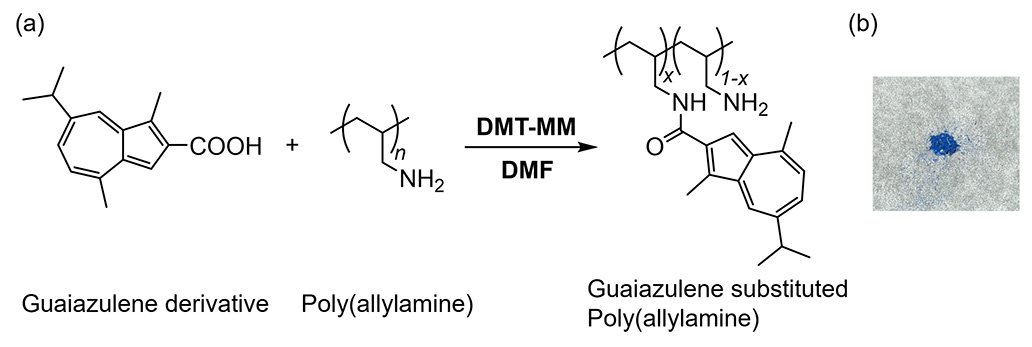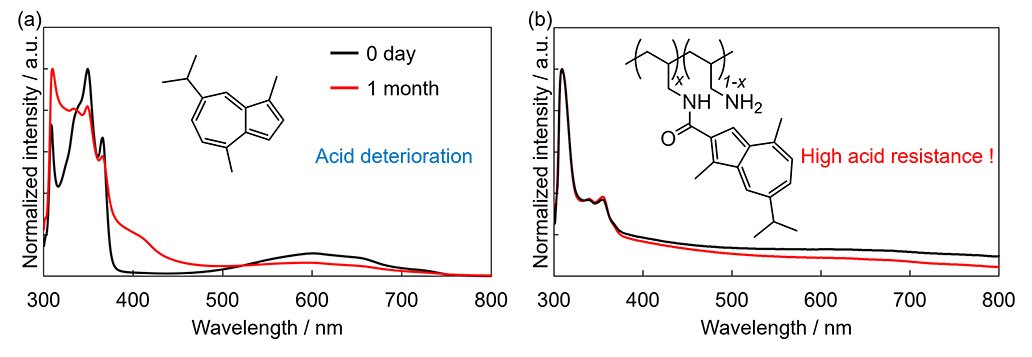Guaiazulene belongs to the class of azulene compounds, known for their vibrant blue color. Guaiazulene produces a blue color more saturated than that of naturally derived blue pigments and contains antioxidant properties.
Although it is often found in topical creams for skincare, it has also been touted as a potential food coloring agent. Yet this potential has been stymied because of its poor water solubility and color degradation under acidic conditions.
A group of researchers, however, has overcome this common stumbling block by introducing guaiazulene into a hydrophilic poly(allylamine).
"We prepared a carboxylic acid, a common type of acid found in many citrus fruits and vinegars, with a guaiazulene skeleton, which can be easily condensed with amines," explains Kouki Oka, an associate professor at Tohoku University who led the research group. "We then synthesized a blue polymer, incorporating the guaiazulene skeleton into the side chain. The synthesis was carried out by reacting the carboxylic acid with a highly hydrophilic poly(allylamine) condensation agent."

The guaiazulene introduction degree was easily adjustable by changing the equivalent amount of carboxylic acid with the guaiazulene skeleton. The polymer with a 3.2% introduction degree was more than 10,000 times more water soluble than guaiazulene alone.
Oka and his colleagues also measured the absorption spectra of guaiazulene and guaiazulene-substituted poly(allylamine) in acidic solution. While the absorption spectrum of guaiazulene (Figure 2a) changed significantly in shape and maximum wavelength after one month, the absorption spectrum of guaiazulene-substituted poly(allylamine) (Figure 2b) showed no significant change. This indicated that the introduction of guaiazulene into poly(allylamine) improves its stability under acidic conditions.
Oka believes that the results will lead to more than just the development of blue colorants under acidic conditions. "This could lead to the development of new functions for hydrophobic and acid-sensitive materials, something that has been difficult to achieve in the past."
Details of the teams' breakthrough were published in the New Journal of Chemistry on May 20, 2025

- Publication Details:
Title: Hydrophilization of guaiazulene-based blue pigment: improving its stability in acidic conditions by substitution with polyallylamine
Authors: Yo Kinoshita, Kiyotaka Maruoka, Yuta Takahashi, Yoko Teruuchi, Minoru Takeuchi, Kazuhiko Igarashi, Hitoshi Kasai, Kouki Oka
Journal: New Journal of Chemistry
DOI: 10.1039/D5NJ01214G






